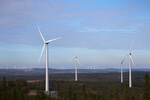Renewable Energy Index - June 2018
The index tracks the contribution of the renewable energy sector broken down by fuel type and state on a series of metrics that are intended to translate abstract concepts such as megawatts and tonnes of CO2 into concepts the community can understand and appreciate such as number of households powered, and number of cars’ pollution avoided.
June 2018
Last month we reported that the NEM was on track to 33.3% renewables by 2020, almost a doubling compared to 2015, and by 2030 it will be 39% with no new policy. This month we examine how this transition is unfolding by state.
Tasmania and South Australia are moving towards a position where they could generate more renewable energy than they could consume, even with greater energy storage.
Their future is as clean power exporters.
- South Australia is on track to renewables generation equal to 70% of the state’s electricity consumption by 2020 and 85% by 2030. Its full pipeline of projects undergoing development could generate more than twice the state’s 2030 consumption.
- Thanks to two new wind farms Tasmania can continue to meet its needs entirely with renewable energy. But it could generate 20% more renewable energy than it consumes if its development projects were to proceed to construction.
Victoria’s is undergoing a rapid transition from one dominated by brown coal to one where close to half of consumption is met by renewables.
- By 2020 Victorian renewables plants will generate 39.4% of the state’s power consumption, a dramatic expansion from the 17.7% share in 2015. By 2030 this is likely to grow to 45.7%.
Queensland has awoken from its renewable slumber and has demonstrated the fastest growth in renewables supply and development
- Between 2010 and 2015 there was almost no expansion in large-scale renewables inQLD and renewables represented just 7.4% of 2015 consumption. By 2020 it will meet 25% of electricity consumption. More impressive is that the projects being pursued by companies for development could generate power equal to over 90% of consumption in 2030 NSW will fall short of 20% renewables by 2020 and lags behind the rest of the NEM
- NSW is on track to 19.7% renewables by 2020 and 26.1% by 2030. Other states are outpacing it in terms of project development but even so its pipeline could generate more than half its expected 2030 electricity consumption if they were to be constructed
- Source:
- Green Energy Markets
- Author:
- Press Office
- Link:
- greenmarkets.com.au/...
- Keywords:
- Australia, renewable energy, market, territory, analysis





















